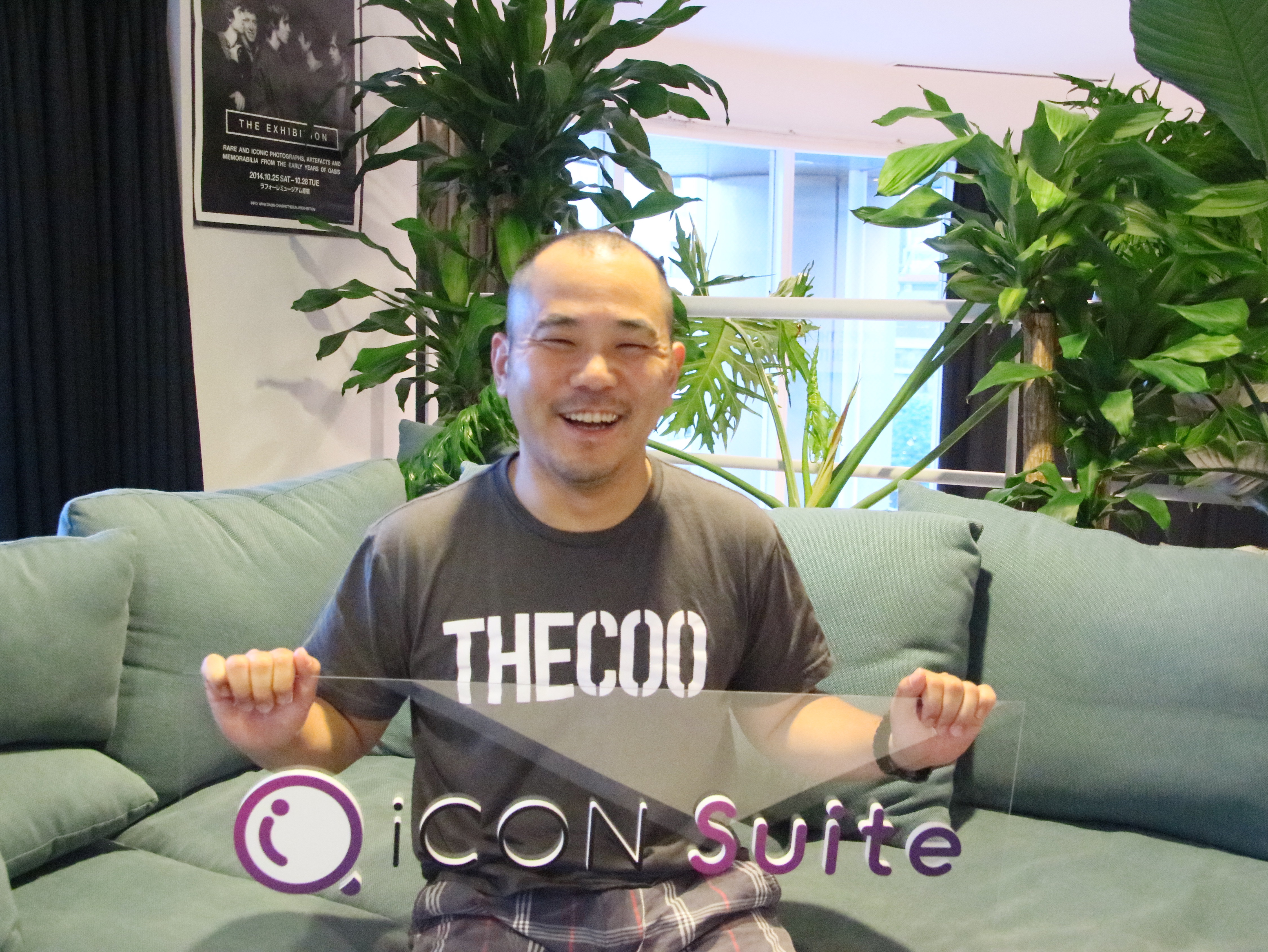「紙とFAXでやりとりをしている」という話はあらゆる業界で聞くが、アパレル産業はその最たるものだろう。取引先が多く関係者も多いため、コミュニケーションの複雑さは想像を絶する。
そんなアパレル業界をIT化しようとするサービスが「AYATORI(アヤトリ)」、アパレルに特化したマネジメントツールだ。AYATORIを使えばコミュニケーションを一元管理でき、煩雑さに伴う業務エラーの削減も見込め、ひいては業務の効率化につながる。
今回はAYATORIを運営する、株式会社DeepValley代表取締役の深谷氏に話を伺った。

複雑なアパレルのサプライチェーンを一括管理する
下図は2017年に経済産業省が公表した「我が国ファッション産業の課題と今後の対応」という資料の一部だ。図左からはアパレル産業が複雑なサプライチェーン環境となっていることが端的に見て取れる。他方図右では、ITプラットフォーム環境を用意して関係者全員がそれにアクセスし、取引を整理しようとしている。

(image: DeepValley)
アパレル業界のサプライチェーンは非常に長く、それゆえ関係者が多い。各業務は高度に専門化されているため、生地、縫製、マーチャンダイジング、販売といった、商流全体を理解するのは非常に困難だ。
ではアパレルのサプライチェーンのプレイヤーはどうやってその管理をしているのか。それは驚くほどにアナログ。アパレル業界はいまだに電話やFAXでコミュニケーションをとり、紙で情報を保存しているところも多いのだ。
洋服を作ろうとしたときにデザイナーがデザイン案を紙に落とし(最近はデジタルなことも増えているが)、これが仕様書のもととなる。これをサプライチェーンの川下に流していき、各工程で必要事項が手書きで追記されていく、というイメージだ。
だが先述したように、アパレルのサプライチェーンは非常に複雑で、仕様書の管理は非常に労力がかかる。紙だからファイリングして管理しなくてはいけないし、それゆえ後から探すにも時間がかかってしまう。手書きだから単純に字が読めないかもしれないし、情報の更新にも時間がかかってしまうというのは、想像に難くない。
そんなアパレル業界のサプライチェーン管理に風穴をあけようとしているのがAYATORI、アパレルのモノ作りプロセスにおける「コミュニケーション」と「必要情報」を一元管理できる、アパレル特化のバーティカルSaaSだ。
AYATORIではプロセスにおける必要情報の一元管理と、コミュニケーションができるサービスです。コミュニケーションを取りながらアイテムが完成されていくのですが、AYATORIにアクセスすれば仕様書の情報、つまり設計図や生地、パターンのデータがとれるようになっています。(深谷氏、以下同様)
招待される関係者は無料で利用可能
深谷氏によれば、FashionTech(ファッションテック)のサービスとして管理システムも登場してきているものの、その多くは「商品ができてから」のサービスであり、生産管理のシステムはなかった。AYATORIは逆に、生産管理を担当する人向けのサービスとなっている。生産管理担当者がAYATORIを使うことで、その周りのデザイナーやMDの担当者が使うようになることを想定している。

(image: DeepValley)
サプライチェーンは当然、自社だけで完結しているわけではなく複数の企業が関わっている。そのため関係者全員がいかにAYATORIを利用するかが、サプライチェーン全体を効率化できるかどうかの鍵となる。その点AYATORIは、マネタイズ方法のユニークさが参加者を増やすグロースハックになっている。
AYATORIのマネタイズは月額課金のサブスクリプションモデルだ。ただお金を支払うのはユーザ全員ではなく、「プロダクトを最初に登録するプレイヤー」だけ。たとえばあるブランドがプロジェクトでAYATORIを使いはじめ、他のプレイヤーを招待すれば、招待された側はこのプロジェクト内なら支払いなしにAYATORIを利用できる、という仕組みだ(ただし無料ユーザは一部機能制限がある)。
招待されたプレイヤーは無料でAYATORIを使えるが、他のプロジェクトでも使いたいとなったら有料会員にならなくてはならない。こうしてユーザを増やしていこうというのがAYATORIの狙いだ。
 上で紹介したようにAYATORIはサプライチェーンの誰でも使えるものだが、AYATORIとしては最初のターゲットは、サプライチェーンの仲で比較的パワーバランスが強いと言われているアパレルだった。しかしいざリリースしてみたら、問い合わせが多かったのは意外にも「OEM業者」だったという。
上で紹介したようにAYATORIはサプライチェーンの誰でも使えるものだが、AYATORIとしては最初のターゲットは、サプライチェーンの仲で比較的パワーバランスが強いと言われているアパレルだった。しかしいざリリースしてみたら、問い合わせが多かったのは意外にも「OEM業者」だったという。
リリースしてみると、実は川中であるOEM業者からの問い合わせも非常に多かったんです。話を聞いていると川中の方々は、ある意味で多少ムリをして仕事をしてくださっているような印象を受けました。あれもこれも調整してくれているので、そうすると管理が煩雑になることが多いらしく、この作業を効率化したいというニーズが強かったんです。
同じ製品プロジェクトの中に複数のプロジェクトを作れる
AYATORIの具体的な機能についてみていきたい。深谷氏によればAYATORIの機能を簡単に説明すると、「メールとLINEを足したようなもの」または「モノ作り版のGitHub(※)」だという。
(※) エンジニアが利用するソフトウェア開発のバージョン管理ツール
ある仕様書ができあがったら、それをAYATORIにアップロード。関係者を招待して(LINEのような)グループをつくり、「この仕様書ができあがりました」「サンプルの生地どうしますか?」…とやりとりを開始する。タスク管理もできるし、ダッシュボードを使った進捗管理も可能だ。

(image: DeepValley)
AYATORIのポイントは、任意の仕様書の中に複数のグループを作れること。Aというグループは縫製工場とやり取りをするグループ、Bは仕様書を基にパターンデータを作ってもらうためにパタンナーとやり取りをするグループ、Cは社内で情報共有をするグループ、といった具合だ。 繰り返しになるが、アパレルのサプライチェーンは長く複雑。そのためある製品をつくるとしても、全員がずっと関わっているわけではない。そのため工程ごとに関与するプレイヤーを限定する必要がある故の機能だ。
サプライチェーン全体を効率化することが、1着に向き合う時間を増やす
仕様書や進捗を紙で管理しているアパレルの現場では、エビデンスを探したり、作業進捗の確認をするのに時間を費やしてしまっているという。こんな状況でユーザがAYATORIを使うことで得られるメリットは、あらゆる作業の「効率化」だ。
仕様書を紙で管理して、メールやLINE、電話などさまざまなシステムで連絡をしていると、現場では次のような状態になる。
「あの件どうなった?」と上司に言われ、担当者はたくさん並んでいるファイルを探す。ファイルから仕様書などを確認(しかも手書きだから解読できないこともある)しても、言われた情報がないので、メールを検索。それでも見つからず「あっ、LINEだ」となって個人アカウントのLINEを確認。それでも状況は把握しきれない(個人のLINEでは情報共有が難しいという課題もあるだろう)。仕方がないので先方に電話。その間先方の作業はストップするのは言うまでもない。
その点AYATORIなら情報は集約されており、管理可能。担当者間の共有も簡単で時間のロスが減るというわけだ。  サプライチェーン上の各所が効率化されれば当然、サプライチェーン全体も効率化される。そのため今までよりも生産量を上げたり、作業時間が減らしたり、1着に対しての時間を増やすといったことが可能になる。
サプライチェーン上の各所が効率化されれば当然、サプライチェーン全体も効率化される。そのため今までよりも生産量を上げたり、作業時間が減らしたり、1着に対しての時間を増やすといったことが可能になる。
サプライチェーン全体が効率化されると、生産量が増えたり時間が短縮されるというメリットもありますが、1着に思いを込めてものづくりができると思うんです。職人さんだけでなく商社やOEMメーカーもトラブル防止のために使っていた時間を、もっといい商品を作るために他のメーカーも探してみたり、こういう工場に依頼してみようということが、少しずつできるようになるかと思います。
余計なことに時間を使うことの弊害って「ものをちゃんと作ろう」っていう環境が追い込まれちゃうことなんですよね。AYATORIがその解決の糸口になるなら嬉しいですね。
シンプルなUIとテクノロジーを利用したサポート
ここまで説明したとおり、アナログな管理が主流のアパレル業界をIT化しようとするAYATORIだが、既存のプレイヤーたちは、デジタル化に拒否反応を起こさないのだろうか。
この点深谷氏も「正直最初は心配していた面もある」と語る。しかし近年では、アパレル業界の台風の目となっているZOZOや、スタートアップが展開するデジタルサービスも増えている。またスマホの普及によって、職人が仕事ではFAXが使っているが、プライベートのやり取りはLINEといったケースも珍しくない。そういう意味ではデジタルだからといって毛嫌いされることは思ったより少ないようだ。
とはいえシステムが複雑になればなるほど、使いこなすのが難しくなるのも事実。そこでAYATORIは「メールやLINEが使えれば、AYATORIも使える」というほどシンプルなUIにこだわっている。  AYATORIは仕組み上、有料課金しているメインユーザから招待された無料ユーザは、ある意味で半強制的にユーザとなる。自らAYATORIのユーザになる意思決定をした有料ユーザはまだしも、無料ユーザはAYATORIを使いこなせない恐れもある。
AYATORIは仕組み上、有料課金しているメインユーザから招待された無料ユーザは、ある意味で半強制的にユーザとなる。自らAYATORIのユーザになる意思決定をした有料ユーザはまだしも、無料ユーザはAYATORIを使いこなせない恐れもある。
AYATORIでは、無料のユーザも有料のユーザと同レベルでサポートするという意思決定をしています。とはいえイチからすべてを説明するわけではなく、モニタリングしながらチャットボットなどもうまく使いながら、全てのユーザをサポートしていく予定です。
AYATORIの仕組みはメールと似ているので、メッセージがあるのに開封をしていないといったことがユーザごとにわかる。そのときにボットから「大丈夫ですか」と聞いたり、To Doが消化されていなかったらリマインドする、といった方法でユーザをサポートしていくようだ。
アパレル以外の業界を見たから、アパレル業界を変えられる
AYATORIはアパレル業界の課題を解決する、toBのサービス。そのためアパレル業界の知見があったほうがサービス展開には有利だろう。しかしながらアパレル業界の経験があるということは、今度はITの知見がない可能性がある。終身雇用の時代が実質的に終わったとはいえ、諸外国にくらべると日本はまだまだ転職が一般的ではなく、複数の業界知識があるというのケースはまだまだ一般的ではないからだ。そのためアパレルとITの知見があるというのは稀有な存在となるだろう。
深谷氏はアパレル業界を経験したあとにIT業界に転職。外の業界をみたことでアパレル業界のデジタル化の遅れを感じた経験が、起業を決意させている。
何回か転職しながら、アパレル業界で10年ほど働きました。しかしそのあと、違和感というか限界を感じて、ITを学ばないとと思い、ITベンチャーに転職したんです。
営業職だったので他の業界のことやテクノロジーについても勉強したのですが、そこから振り返るとアパレル業界というのはすごいアナログだったことがわかったんです。
深谷氏が最も衝撃を受けたのが、飲食系のプラットフォームサービスだったという。飲食もアパレルと同じで、IT化が進んでいないとして挙げられることの多い業界だ。それにも関わらずあるサービスでは、店舗が仕入れや受発注、請求管理など数々の業務をプラットフォーム化し、見事に各業務が連携されていた。
アパレル業界でも同じような仕組みを構築できそうなものだが、そんなプラットフォームはない。アパレルとITの知識を得た深谷氏は、他の業界で起きている地殻変動も感じて起業を決意。DeepValley社を設立し、アパレル業界のプラットフォームサービスとなるべく、AYATORIの開発に乗り出した。
バラバラな仕様書を統一する狙い
2019年3月、DeepValley社は以下のプレスリリースを発表している。
どうせなら仕様書統一しませんか?DeepValleyがアパレル商品における各種製品仕様書を作成。
アパレル業界における仕様書は統一されておらず、各社が異なるフォーマットを利用している。フォーマットが違えば情報を探し出すのが大変だし、必要な情報が抜け漏れているということもあるだろう。これが業界としての非効率を生み出しているという側面は見逃せない。  サービス展開してからAYATORIがヒアリングする中で判明したのは、特殊な仕様書が必要な場面は非常に少ないということだ。実際ステークホルダーに話を聞いても、とくにこだわりのあるプレイヤーは少なかった。そこでDeepValley社は、統一フォーマットとして使える最大公約数的な仕様書フォーマットを公開。多くのプレイヤーに使ってもらうため、無料で公開するに至った。
サービス展開してからAYATORIがヒアリングする中で判明したのは、特殊な仕様書が必要な場面は非常に少ないということだ。実際ステークホルダーに話を聞いても、とくにこだわりのあるプレイヤーは少なかった。そこでDeepValley社は、統一フォーマットとして使える最大公約数的な仕様書フォーマットを公開。多くのプレイヤーに使ってもらうため、無料で公開するに至った。
先ほども申し上げたように、仕様書を読み解くほうからすれば、統一フォーマットのほうが圧倒的に便利なんです。彼らが読みやすいことによって、大げさに言えば日本の生産力が上がるんですよ。
もちろん公開したものだけだと、パターンデータが対応できなかったりと、まだまだ課題はあります。ただこれをベースにしてもらって、抜け漏れが減ったりしてアパレル業界全体がもっとスムーズになればいいと思って、公開するに至りました。
もちろん統一フォーマットにすればAYATORIとしてもメリットがあるのは間違いない。フォーマットが均一ならOCRで読み込むなどの方法でも、どこにどんな情報が書いてあるかがわかるので、仕様書の内容をデータ化しやすい。データ化さえできれば、海外生産の際に多言語化したり、逆に海外のブランドから日本に発注しやすくなるといった可能性もある。
データやAIが、アパレル業界を支えるかもしれない
AYATORIを運営していけば将来的に、仕様書のデータや、仕様書をもとにしたコミュニケーションのデータなどが溜まってくるだろう。「将来的にはデータ分析にも取り組むが、現時点ではサービス作りに集中している」というものの、見えている世界観はあるという。それはデザインについての分析やAIの活用だ。
アパレルではデザイン×AIというのはよく話題に登るテーマ。しかし現状、デザインをデータ化することは難しいという論調が多いように感じている。その要因はデザイン(仕様書)がアナログであるがために、AIに学習させるデータがないことに起因する。最終的な洋服画像はあっても、その設計図である仕様書まではAIが取り込めるデータになっていないのだ。
しかし仮にAYATORIが仕様書・デザインのデータ化に成功して、洋服の画像と設計図を合わせて分析できれば、AIが予測できることがでてくる可能性がある。
AIが活躍する可能性ももちろんありますが、とはいえファッションというのはカウンターカルチャーでもあるので、むしろAIのサジェストと反対のものが注目されるといったこともあると思います。
でもたとえば、仕様書でデザインを決めて生地を決めた時点で「これはあなたのブランドで売れる確率は何パーセントです」と算出したり、「この仕様だとここにファスナー付けると便利」っていう提案は便利ですよね。AYATORIはそちらに目を向けたい。
「この素材でその縫い方したら裂けやすくなります」といったこともわかるかもしれまえせんね。作ってみてからトラブルになっては遅いので、事前にわかるなら、これも作業の効率化に繋がります。
 最後に深谷氏に、アパレル業界へのメッセージをお願いした。
最後に深谷氏に、アパレル業界へのメッセージをお願いした。
プラットフォームだAIだと語りましたが、ファッションというには感覚やセンス、積み重ねた技術が絶対に必要で、テクノロジーはそれらに集中するために役立つはずなんです。それでもやっぱり新しい、よくわからないからという理由だけで毛嫌いされることがあります。僕らはファッションやアパレル業界が大好きですけど、そうやって進歩しないで衰退に向かってしまうというのは業界全体にとってよくないと考えています。
だからやっぱり大好きでいるために、AYATORIを通して、生涯をかけて業界を変えていかなければならないというのが、DeepValleyの使命です。ぜひ応援をよろしくお願いします。
アパレル業界のトラブルをなくし、よりよいものづくりができる環境を用意しようとするAYATORI。現在は作業の効率化やコミュニケーションの促進に重点を置いているが、将来的には仕様書データを使って、さらに業界に資する可能性を秘めている。アパレル関係者はぜひAYATORIに注目してほしい。
代表者:深谷 玲人(Fukaya Reito)
所在地:東京
設立日:2018年5月
URL :https://www.deepvalley.co.jp/
※情報は記事公開時点のものです。
インタビューはpodcastでも配信しています
ポッドキャストで取材時のインタビューを配信しています。
制作チーム
ぺーたろー / 納富 隼平(Notomi Jumpei)
合同会社pilot boat 代表社員CEO
1987年生まれ。明治大学経営学部卒、早稲田大学大学院会計研究科修了。在学中公認会計士試験合格。大手監査法人で会計監査に携わった後、ベンチャー支援会社に参画し、300超のピッチ・イベントをプロデュース。 2017年に独立して合同会社pilot boatを設立し、引き続きベンチャー支援に従事。長文でスタートアップを紹介する自社メディア「pilot boat」、toCベンチャープレゼンイベント「sprout」、その他スタートアップイベントを運営。得意分野はファッション・ビューティ×テクノロジーをはじめとするライフスタイル・カルチャー系toCサービス。各種メディアでスタートアップやイノベーション関連のライター、大手企業向けオープンイノベーション・コンサルティングも務める。
Twitter: @jumpei_notomi
森田大翔(TAISHO) 写真家/映像作家
【写真】 雑誌やWeb広告など、人物を中心に撮影。イベント撮影や企業様の採用写真(Wantedlyなど)も多く撮影。
【映像】 企業様を対象にしたドキュメンタリー映像やメイキング映像が多く、ドローンを使用した撮影も可能。(CM撮影など)
【受賞歴】 “The new generation digital photo contest 2013” 最優秀賞受賞
最新情報はLINE@で!

















